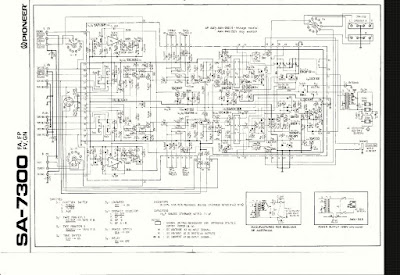The remembered fever of voluminous and heavy Hi-Fi equipment seems to
be back. The suspected reason is its special quality of electronic design and high
quality materials, in contrast to the present equipment where plastic and other
similar materials are not as resistant to the test of time.
The golden age of Hi-Fi equipment is particularly remembered
in the 70's and 80's. Automation in electronic design took its first steps and
designers and engineers only had the most advanced techniques for the time to
develop and design circuits and electronic components, especially in the 70's
and early 80's.
The design and testing of these equipment was done with
special compliance and care from circuit calculations to the manufacture of the
PCB and the schematic diagram, amount of those schematic diagrams made by
professional draftsmen without the present computer technology and automation.
The audio
companies in past times had their own drafting department (professional draftsmen
were worth only compass, sets square, insoles and molds-for in physical schematics
of their respective components, perfect delineation, faultless lace of line and
drawing. *¨In the electrical industry, a schematic diagram is often used to
describe the design of equipment. Schematic diagrams are often used for the
maintenance and repair of electronic and electro mechanical systems.[1] Original
schematics were done by hand, using standardized templates or pre-printed
adhesive symbols, but today Electrical CAD software is often used.In electronic
design automation, until the 1980s schematics were virtually the only formal
representation for circuits.¨ http://.en.wikipedia.org/wiki/Schematic
The
designers were required to different quality standards such as DIN, IHF, etc.
and resulted in the production of equipment with very outstanding features and
arrogance sound quality |
| Amount of schematic diagrams made by professional draftsmen without the present computer technology and automation. |
The concept of "Hi Fi" (High Fidelity) begins to
come into play when the quality of the audio system reaches or exceeds a
certain level.
This level of quality is determined by several factors that
basically respond to the idea that in our ear comes a sound as similar as
possible to the one that was generated at source. This means that a Hi-Fi chain
would try to make the buyer of a classical music record sitting comfortably at
home feel the same auditory sensations as if they were in the best location in
the concert hall: to recognize the sound of each instrument, to situate it
spatially, to listen to the slightest tinkling, to appreciate the differences
in level between a " Pianissimo " and a " Fortissimo "
etc.
The main peculiarity of Hi-Fi equipment of other times and
that makes them precisely attractive is its robust construction and high
quality design circuits that with much possibility surpass the test of time.
Another property that makes them striking is their complete compatibility
between brands, models and years in which they were manufactured, which offers
a total flexibility when wanting to make a high fidelity audio chain according
to the tastes and preferences of each person, (many take passion collecting
large number of components to show them).
Many people are inhibited and unsure of risking time and
money in buying appliances that have many years, however, that should not be
analyzed that way. A lot of repairing electronics technicians (I included) have bought Hi-Fi
equipment many times, and the important thing is to test all the functions and
if you get something that does not work, just do not buy that equipment, that's
the rule, so you do not risk in buying something that is not in good condition.
Fortunately, Hi-Fi equipment abounds in good condition and better still in
excellent condition even if they are many years old, keep in mind that the
electronic design of those old Hi-Fi equipment is truly outstanding and
reliable.












